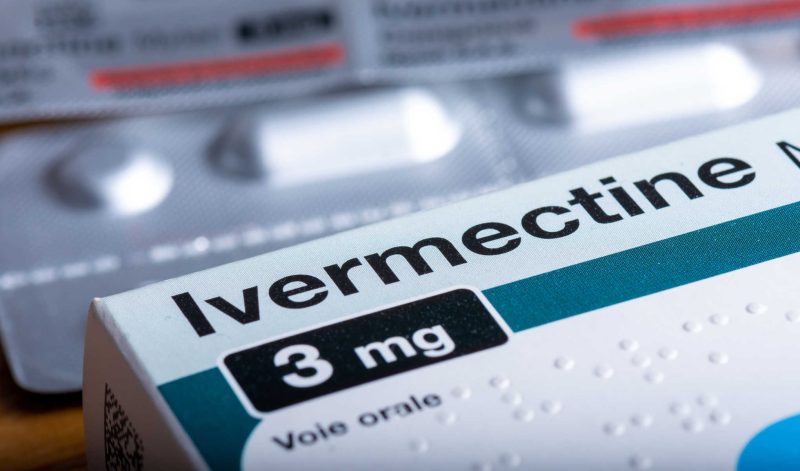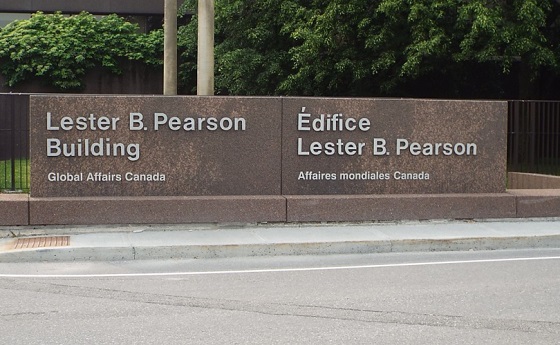Brownstone Institute
Setting the Record Straight on Ivermectin

From the Brownstone Institute
BY
The COVID-19 pandemic brought us a panoply of lies and evidence-light declarations that were less intended to inform Americans than to consolidate power and buy time. Among these were Anthony Fauci’s famous shift from arguing against wearing masks, to recommending wearing one, and, finally, to wearing two.
Fauci also tried to convince us that the SARS-CoV-2 virus was not manipulated in a lab even though his inner circle had emailed him about “unusual features” of the virus that looked “potentially engineered.” And, of course, we had “fifteen days to stop the spread,” an evergreen concept that dragged on for two years. Lest readers fault us for forgetting, there was also the “gain of function” controversy, the focused protection battle, school closures, lockdowns, vaccine mandates, and vaccine misrepresentations.
These topics have received much public attention. The one pandemic topic that hasn’t, and is nonetheless important, is the maligned ivermectin. It’s time to set the record straight.
If you’ve followed the news closely over the last two years, you’ve probably heard a few things about ivermectin. First, that it’s a veterinary medicine intended for horses and cows. Second, that the FDA and other government regulatory agencies recommended against its use for COVID-19. Third, that even the inventor and manufacturer of ivermectin, Merck & Co., came out against it. Fourth, that one of the largest studies showing that ivermectin worked for COVID-19 was retracted for data fraud. And, finally, that the largest and best study of ivermectin, the TOGETHER trial, showed that ivermectin didn’t work.
Let’s consider the evidence.
Ivermectin has a distinguished history, and it may have benefits comparable to those of penicillin. The anti-parasitic’s discovery led to a Nobel Prize and subsequent billions of safe administrations around the world, even among children and pregnant women. “Ivermectin is widely available worldwide, inexpensive, and one of the safest drugs in modern medicine.”
The FDA put out a special warning against using ivermectin for COVID-19. The FDA’s warning, which included language such as, “serious harm,” “hospitalized,” “dangerous,” “very dangerous,” “seizures,” “coma and even death,” and “highly toxic,” might suggest that the FDA was warning against pills laced with poison, not a drug the FDA had already approved as safe. Why did it become dangerous when used for COVID-19? The FDA didn’t say.
Because of the FDA’s rules, if it were to make any statement on ivermectin, it was obliged to attack it. The FDA prohibits the promotion of drugs for unapproved uses. Since fighting SARS-CoV-2 was an unapproved use of ivermectin, the FDA couldn’t have advocated use without obvious hypocrisy. Ivermectin’s discoverer, Merck & Co., had multiple reasons to disparage its own drug.
Merck, too, couldn’t have legally “promoted” ivermectin for COVID-19 without a full FDA approval, something that would have taken years and many millions of dollars. Plus, Merck doesn’t make much money from cheap, generic ivermectin but was hoping to find success with its new, expensive drug, Lagevrio (molnupiravir).
A large study of ivermectin for COVID-19 by Elgazzar et al. was withdrawn over charges of plagiarism and faked data. Many media reports seem fixated on this one dubious study, but it was one of many clinical studies. After the withdrawn studies have been removed from consideration, there are 15 trials that suggest that ivermectin doesn’t work for COVID-19 and 78 that do.
The TOGETHER trial received significant positive press. The New York Times quoted two experts who had seen the results. One stated, “There’s really no sign of any benefit [from ivermectin],” while the other said, “At some point it will become a waste of resources to continue studying an unpromising approach.”
While the Elgazzar paper was quickly dismissed, the TOGETHER trial was acclaimed. It shouldn’t have been. Researchers who have analyzed it have found 31 critical problems (impossible data; extreme conflicts of interest; blinding failure), 22 serious problems (results were delayed six months; conflicting data), and 21 major problems (multiple, conflicting randomization protocols) with it.
While the popular narrative is that the TOGETHER trial showed that ivermectin didn’t work for COVID-19, the actual results belie that conclusion: ivermectin was associated with a 12 percent lower risk of death, a 23 percent lower risk of mechanical ventilation, a 17 percent lower risk of hospitalization, and a 10 percent lower risk of extended ER observation or hospitalization. We have calculated that the probability that ivermectin helped the patients in the TOGETHER trial ranged from 26 percent for the median number of days to clinical recovery to 91 percent for preventing hospitalization. The TOGETHER trial’s results should be reported accurately.
Based on the clinical evidence from the 93 trials that ivermectin reduced mortality by an average of 51 percent, and on the estimated infection fatality rate of COVID-19, about 400 infected Americans aged 60-69 would need to be treated with ivermectin to statistically prevent one death in that group. The total cost of the ivermectin to prevent that one death: $40,000. (Based on the GoodRx website, a generic prescription for ivermectin is priced at approximately $40. Roughly 2.5 prescriptions would be needed per person to receive the average dose of 150 mg per patient.)
How much is your life worth? We’re betting it’s worth far more than $40,000.
When the next pandemic strikes, by necessity we’ll rely on older drugs because newer ones require years of development. Ivermectin is a repurposed drug that helps, and could have helped so much more. It deserves recognition, not disparagement. What we really need, however, is a way to inoculate ourselves against the lies and misrepresentations of powerful public figures, organizations, and drug companies. Sadly, there are no such vaccines for that contagion.
Brownstone Institute
Bizarre Decisions about Nicotine Pouches Lead to the Wrong Products on Shelves

From the Brownstone Institute
A walk through a dozen convenience stores in Montgomery County, Pennsylvania, says a lot about how US nicotine policy actually works. Only about one in eight nicotine-pouch products for sale is legal. The rest are unauthorized—but they’re not all the same. Some are brightly branded, with uncertain ingredients, not approved by any Western regulator, and clearly aimed at impulse buyers. Others—like Sweden’s NOAT—are the opposite: muted, well-made, adult-oriented, and already approved for sale in Europe.
Yet in the United States, NOAT has been told to stop selling. In September 2025, the Food and Drug Administration (FDA) issued the company a warning letter for offering nicotine pouches without marketing authorization. That might make sense if the products were dangerous, but they appear to be among the safest on the market: mild flavors, low nicotine levels, and recyclable paper packaging. In Europe, regulators consider them acceptable. In America, they’re banned. The decision looks, at best, strange—and possibly arbitrary.
What the Market Shows
My October 2025 audit was straightforward. I visited twelve stores and recorded every distinct pouch product visible for sale at the counter. If the item matched one of the twenty ZYN products that the FDA authorized in January, it was counted as legal. Everything else was counted as illegal.
Two of the stores told me they had recently received FDA letters and had already removed most illegal stock. The other ten stores were still dominated by unauthorized products—more than 93 percent of what was on display. Across all twelve locations, about 12 percent of products were legal ZYN, and about 88 percent were not.
The illegal share wasn’t uniform. Many of the unauthorized products were clearly high-nicotine imports with flashy names like Loop, Velo, and Zimo. These products may be fine, but some are probably high in contaminants, and a few often with very high nicotine levels. Others were subdued, plainly meant for adult users. NOAT was a good example of that second group: simple packaging, oat-based filler, restrained flavoring, and branding that makes no effort to look “cool.” It’s the kind of product any regulator serious about harm reduction would welcome.
Enforcement Works
To the FDA’s credit, enforcement does make a difference. The two stores that received official letters quickly pulled their illegal stock. That mirrors the agency’s broader efforts this year: new import alerts to detain unauthorized tobacco products at the border (see also Import Alert 98-06), and hundreds of warning letters to retailers, importers, and distributors.
But effective enforcement can’t solve a supply problem. The list of legal nicotine-pouch products is still extremely short—only a narrow range of ZYN items. Adults who want more variety, or stores that want to meet that demand, inevitably turn to gray-market suppliers. The more limited the legal catalog, the more the illegal market thrives.
Why the NOAT Decision Appears Bizarre
The FDA’s own actions make the situation hard to explain. In January 2025, it authorized twenty ZYN products after finding that they contained far fewer harmful chemicals than cigarettes and could help adult smokers switch. That was progress. But nine months later, the FDA has approved nothing else—while sending a warning letter to NOAT, arguably the least youth-oriented pouch line in the world.
The outcome is bad for legal sellers and public health. ZYN is legal; a handful of clearly risky, high-nicotine imports continue to circulate; and a mild, adult-market brand that meets European safety and labeling rules is banned. Officially, NOAT’s problem is procedural—it lacks a marketing order. But in practical terms, the FDA is punishing the very design choices it claims to value: simplicity, low appeal to minors, and clean ingredients.
This approach also ignores the differences in actual risk. Studies consistently show that nicotine pouches have far fewer toxins than cigarettes and far less variability than many vapes. The biggest pouch concerns are uneven nicotine levels and occasional traces of tobacco-specific nitrosamines, depending on manufacturing quality. The serious contamination issues—heavy metals and inconsistent dosage—belong mostly to disposable vapes, particularly the flood of unregulated imports from China. Treating all “unauthorized” products as equally bad blurs those distinctions and undermines proportional enforcement.
A Better Balance: Enforce Upstream, Widen the Legal Path
My small Montgomery County survey suggests a simple formula for improvement.
First, keep enforcement targeted and focused on suppliers, not just clerks. Warning letters clearly change behavior at the store level, but the biggest impact will come from auditing distributors and importers, and stopping bad shipments before they reach retail shelves.
Second, make compliance easy. A single-page list of authorized nicotine-pouch products—currently the twenty approved ZYN items—should be posted in every store and attached to distributor invoices. Point-of-sale systems can block barcodes for anything not on the list, and retailers could affirm, once a year, that they stock only approved items.
Third, widen the legal lane. The FDA launched a pilot program in September 2025 to speed review of new pouch applications. That program should spell out exactly what evidence is needed—chemical data, toxicology, nicotine release rates, and behavioral studies—and make timely decisions. If products like NOAT meet those standards, they should be authorized quickly. Legal competition among adult-oriented brands will crowd out the sketchy imports far faster than enforcement alone.
The Bottom Line
Enforcement matters, and the data show it works—where it happens. But the legal market is too narrow to protect consumers or encourage innovation. The current regime leaves a few ZYN products as lonely legal islands in a sea of gray-market pouches that range from sensible to reckless.
The FDA’s treatment of NOAT stands out as a case study in inconsistency: a quiet, adult-focused brand approved in Europe yet effectively banned in the US, while flashier and riskier options continue to slip through. That’s not a public-health victory; it’s a missed opportunity.
If the goal is to help adult smokers move to lower-risk products while keeping youth use low, the path forward is clear: enforce smartly, make compliance easy, and give good products a fair shot. Right now, we’re doing the first part well—but failing at the second and third. It’s time to fix that.
Addictions
The War on Commonsense Nicotine Regulation

From the Brownstone Institute
Cigarettes kill nearly half a million Americans each year. Everyone knows it, including the Food and Drug Administration. Yet while the most lethal nicotine product remains on sale in every gas station, the FDA continues to block or delay far safer alternatives.
Nicotine pouches—small, smokeless packets tucked under the lip—deliver nicotine without burning tobacco. They eliminate the tar, carbon monoxide, and carcinogens that make cigarettes so deadly. The logic of harm reduction couldn’t be clearer: if smokers can get nicotine without smoke, millions of lives could be saved.
Sweden has already proven the point. Through widespread use of snus and nicotine pouches, the country has cut daily smoking to about 5 percent, the lowest rate in Europe. Lung-cancer deaths are less than half the continental average. This “Swedish Experience” shows that when adults are given safer options, they switch voluntarily—no prohibition required.
In the United States, however, the FDA’s tobacco division has turned this logic on its head. Since Congress gave it sweeping authority in 2009, the agency has demanded that every new product undergo a Premarket Tobacco Product Application, or PMTA, proving it is “appropriate for the protection of public health.” That sounds reasonable until you see how the process works.
Manufacturers must spend millions on speculative modeling about how their products might affect every segment of society—smokers, nonsmokers, youth, and future generations—before they can even reach the market. Unsurprisingly, almost all PMTAs have been denied or shelved. Reduced-risk products sit in limbo while Marlboros and Newports remain untouched.
Only this January did the agency relent slightly, authorizing 20 ZYN nicotine-pouch products made by Swedish Match, now owned by Philip Morris. The FDA admitted the obvious: “The data show that these specific products are appropriate for the protection of public health.” The toxic-chemical levels were far lower than in cigarettes, and adult smokers were more likely to switch than teens were to start.
The decision should have been a turning point. Instead, it exposed the double standard. Other pouch makers—especially smaller firms from Sweden and the US, such as NOAT—remain locked out of the legal market even when their products meet the same technical standards.
The FDA’s inaction has created a black market dominated by unregulated imports, many from China. According to my own research, roughly 85 percent of pouches now sold in convenience stores are technically illegal.
The agency claims that this heavy-handed approach protects kids. But youth pouch use in the US remains very low—about 1.5 percent of high-school students according to the latest National Youth Tobacco Survey—while nearly 30 million American adults still smoke. Denying safer products to millions of addicted adults because a tiny fraction of teens might experiment is the opposite of public-health logic.
There’s a better path. The FDA should base its decisions on science, not fear. If a product dramatically reduces exposure to harmful chemicals, meets strict packaging and marketing standards, and enforces Tobacco 21 age verification, it should be allowed on the market. Population-level effects can be monitored afterward through real-world data on switching and youth use. That’s how drug and vaccine regulation already works.
Sweden’s evidence shows the results of a pragmatic approach: a near-smoke-free society achieved through consumer choice, not coercion. The FDA’s own approval of ZYN proves that such products can meet its legal standard for protecting public health. The next step is consistency—apply the same rules to everyone.
Combustion, not nicotine, is the killer. Until the FDA acts on that simple truth, it will keep protecting the cigarette industry it was supposed to regulate.
-

 Fraser Institute1 day ago
Fraser Institute1 day agoCourts and governments caused B.C.’s property crisis—they’re not about to fix it
-

 Alberta1 day ago
Alberta1 day agoChatGPT may explain why gap between report card grades and standardized test scores is getting bigger
-

 International2 days ago
International2 days agoIs America drifting toward civil war? Joe Rogan thinks so
-

 Censorship Industrial Complex2 days ago
Censorship Industrial Complex2 days agoEU’s “Democracy Shield” Centralizes Control Over Online Speech
-

 Alberta16 hours ago
Alberta16 hours agoFederal budget: It’s not easy being green
-

 Energy8 hours ago
Energy8 hours agoIt should not take a crisis for Canada to develop the resources that make people and communities thrive.
-

 International2 days ago
International2 days agoBondi and Patel deliver explosive “Clinton Corruption Files” to Congress
-

 International2 days ago
International2 days agoUS announces Operation Southern Spear, targeting narco-terrorists








